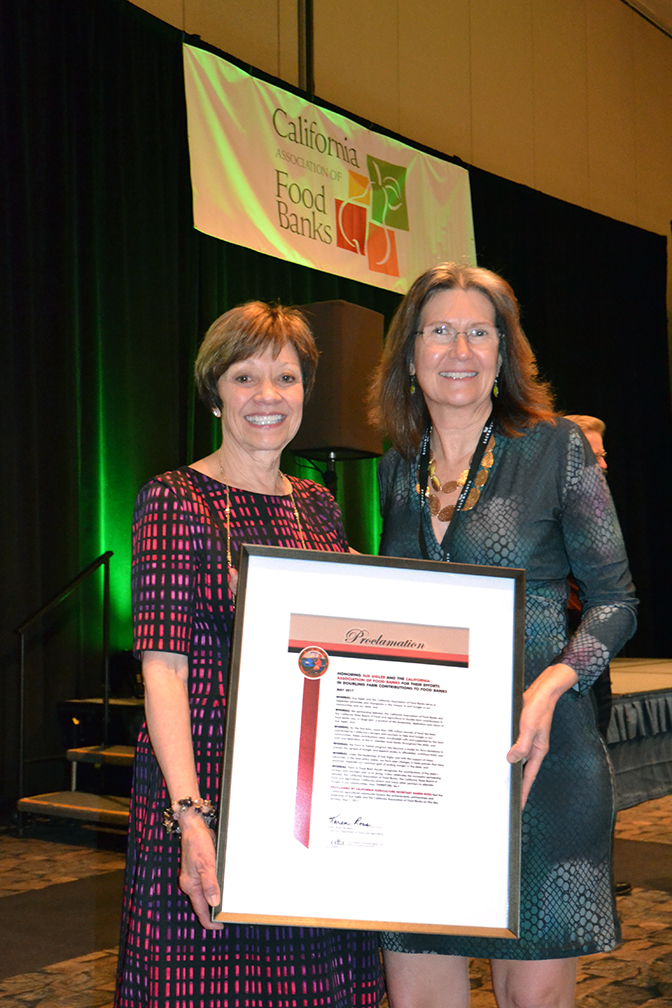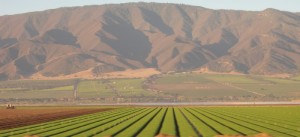Note – Public Service Recognition Week is May 7-13.
That’s right, we’re all in this together. The dedicated public servants of CDFA work tirelessly to fulfill an essential function – assisting farmers and ranchers in producing quality agricultural products, including a food supply that benefits Californians and helps feed the world.
It is driven by experts in the many areas covered by CDFA, including activities that might not fit traditional assumptions about Ag. For example, specialists and technicians in our Division of Measurement Standards are renowned for their expertise in the field of motor vehicle fuels, from the petroleum-based variety to hydrogen, electricity, bio-fuels, and whatever is next in the pipeline. When you go to the gas station, the confidence you have in the quality of that fuel is a direct result of this work. This division makes sure next-generation companies like Uber and Lyft are operating with apps and systems that are fair and safe for consumers. There is also oversight of the scanners at the supermarket, the scales in the produce aisle, and stated-volume in cereal boxes and other packaged items.
Elsewhere, we’re in good hands with veterinarians and other specialists in our Division of Animal Health and Food Safety Services. They check the health of cattle and chickens and the safety of eggs and milk. More than a few of our veterinarians wear cowboy boots on a daily basis (and get them dirty), because their job isn’t in an office – it’s in the field, on the farm or in the barn – or at the bottling plant, the auction yard, or the butcher shop.
Much of the work we do at CDFA deals with invasive species, challenges like the Mediterranean fruit fly and the Asian citrus psyllid. We have programs to eradicate them or control them. We have an extensive detection network in partnership with California’s counties. And we’re so committed to preventing their arrival in the first place that we have 16 Border Protection Stations throughout the state that reject thousands of invasives each year. This work continues in our laboratories, with scientists peering through microscopes at weeds and seeds and feeds, not to mention a long list of bugs and much smaller crawlers.
We have a wealth of experience working for us in our inspection and marketing offices, including inspectors who check fruits, vegetables and nuts for everything from ripeness to size, weight, and accuracy of labeling. We uphold the regulations of the National Organic Program to preserve organic integrity in the largest Ag state in the land – that’s right here in California. We go to farmers’ markets to make sure vendors are growing what they sell. We are also working very closely with school districts in their efforts to provide nutritious, locally-produced meals for children. And we have economic experts who regulate milk pricing at the farm level.
Did you know we also help dairy farmers fund, design and install digesters that turn methane emissions from their cows into energy that they can use and even sell back to the power grid? Or that we responded to the recent drought by helping farmers install highly efficient irrigation systems, soil moisture monitors, and related solar-powered systems that ratchet up our water use efficiency and even improve the health of our soils? In addition, our Fertilizer Research and Education Program works to assist farmers with information to improve the efficiency of nitrogen fertilizers in the soil. These are examples of science at work for all of us, and the scientists are right here at CDFA.
We also want to mention the highly-valued support teams that help make all this possible – information technology and our departments of administration and finance. They make sure the bills are paid and that the rest of us have what we need to do our jobs. And in recent years we have added a grants administration unit that not only oversees the Specialty Crop Block Grant Program but other programs for ag literacy.
Agriculture makes California a better place to live because of the diversity of what we grow and how we grow it. At CDFA we have fairs specialists to support the California Network of Fairs as it showcases all that agriculture has meant to our state in its past as well as the technology that will help it continue its robust contribution to the health and well-being of our state in the future. Our core mission is to protect and promote agriculture. And people – scientists, specialists, technicians, trappers and everyone else who works for you here at CDFA – will always be the heart of this organization. Like all of us, their lives extend beyond their jobs – but being public servants is part of who they are, and that distinction is worthy of our appreciation.
Thank you to all CDFA employees on the occasion of Public Service Recognition Week. Every healthy meal – and a whole lot of other important things that happen just the way they should – is proof of their value to us all and reinforcement that we are, indeed, all in this together.
Watch this video for new employees describing the activities of CDFA.









